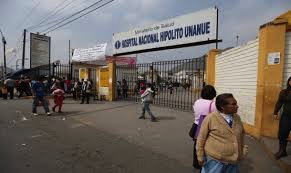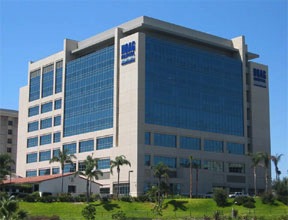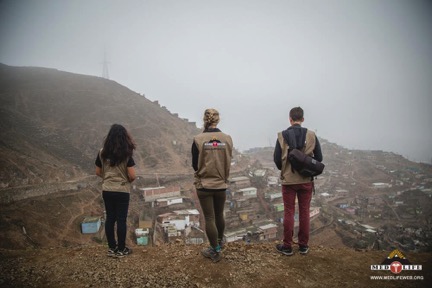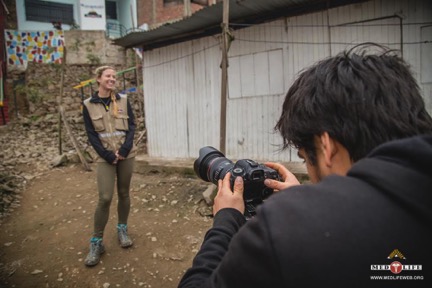It’s already been about 2 months since I arrived in Lima and I have no idea where the time has gone. I am experiencing so much everyday that weeks go by so extremely fast. My first couple of weeks here were filled with getting acclimated to the area and learning a little bit more about the organization. I was not affiliated with a MEDLIFE chapter at Boston University because we didn’t have one (that is hopefully changing this year!). I spent my first week here asking a million questions about MEDLIFE and trying to hop on any opportunity to go out into the field to learn more about the communities we are helping here in Lima. Fortunately, there were many opportunities!
My most recent field experience was also one that made me realize just how different the health care is here in Peru from in the US. I went with one of our MEDLIFE nurses and our MEDLIFE doctor to visit a patient that was having a very complicated liver surgery. When I walked up to this hospital, one of the first things I noticed was the overwhelming amount of people waiting outside in the clinic and emergency care areas. Juan Pablo, our doctor, could tell this sight shocked me and told me: “This is nothing. You should see this place at 8am in the morning when they first open. There are twice as many people here. Maybe more.” I just couldn’t imagine that. The lines must take over the streets at that point. Once we entered the building, we walked around looking for the outpatient rooms. There were people standing everywhere and even stray dogs running up and down the stairs. I knew that the copious amounts of dogs in Peru were an issue based on our visits to the communities. I never thought that it would be to the point were stray dogs would be running around hospitals.
We continued our search for the patient and found out that she was still in surgery. We then proceeded to the waiting room where we found the patient’s brother and husband. As we were sitting there looking over the receipts of the patient’s multiple prescriptions, I took a second to look around the waiting room. Growing up my dad was an Oncologist and my mom was an RN- so I was basically raised in a hospital and sitting in waiting rooms was nothing new to me. But everything that I was looking at was different than any hospital I had been in back home in the States. Everything seemed more worn down: the walls, the chairs, and the even the people. There was no speaker system in place so when a patient was done with surgery a nurse or secretary (I couldn’t tell who it was from far way) would hang over the banister from the second floor and shout patients names so family members could go back. To the right of where I was sitting was the radiology section of the hospital, which I was very family with since my dad also had a radiology center in the same building as his practice. But I didn’t see any warning signs that I was used to seeing at the entrance to the center. I thought this was slightly strange but then I also thought that maybe I just couldn’t see the signs from where I was sitting.
We sat there for about 45 minutes and talking to the patient’s family about what they were suppose to do with the equipment and bandages that the doctor had given them to help with outpatient treatment. We soon left with the prescription receipts in hand and still hadn’t seen the patient come out of the surgery. I asked Juan Pablo about this and he seemed shocked too that it was four hours later and our patient still wasn’t out. Yet he knew exactly why: our patient had been through two other surgeries for the same liver disease and this one was extremely complicated due to the fragile state of the patient. It was heart breaking to think that this young woman of just 41 years old was going through surgery after surgery and suffering with such a complicated disease.


I did go on a more uplifting field visit with the communications team just the week before. One of the areas of public health that I am hoping to study more is global health communication and education. More specifically, I am really interested on how people portray disparity and health issues from one population to another. From my studies it seems that communication in health seems to be a reoccurring problem. Whether it is from one organization to another or from one population to the government, it seems that people have trouble listening to what the health problem is and working together to fix that problem. So many times NGO’s will come in and give the communities what the organization thinks the community needs instead of talking to the people and really listening to their problems. These messages end up going back to government officials in different countries and they provide the communities with supplies and tools that they really don’t need or even know how to use. I think that while educating communities about health is vitally important, I also think that health officials and NGOs need to be educated on how to communicate with locals in impoverished or at risk communities to be able to figure out what the real problem is.

I believe this is just one area of global health that MEDLIFE does an amazing job with. We work hand in hand with the community members and really listen to what their problems and needs are before we come in with any type of help. We talk to them and earn their trust and never promise them something we can’t deliver. We know how to communicate with them. Because of this, I think it makes us better able to communicate their needs to the rest of our chapters and supporters. On my field experiences with the communications team I was helping them get footage for our most recent project. We are currently working with a community called Union Santa Fe to get legal and safe electricity for their residents. It was so interesting to see the types of questions that the communications team was asking the members during the interviews and to hear the reasoning behind why these people need this electricity. We then walked around and went into many homes to see just what the electrical situation was. The team was taking pictures of everything including light fixtures, the families’ electrical connection set up, and the unstable community posts that hold the wires up. They made sure to capture everything going on and show just how unsafe the electrical situation is there. I am super excited to see how this video comes out and to see just how MEDLIFE will portray the need of electricity within this community. I also enjoyed getting so involved with this project because it allowed me to have the first hand experience to relay back to my chapters. I was able to tell them how I could hear the sparking coming from the wires that were running from house to house and how community members were concerned about the safety of their children around these wires.

So while its only been 8 weeks since I have arrived in Lima, I am excited to see what the city and MEDLIFE have in store for me for my next 8 months.
